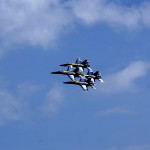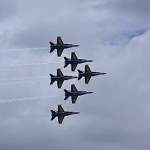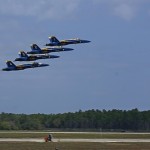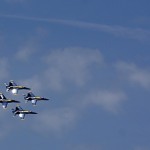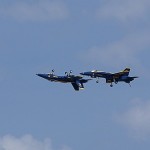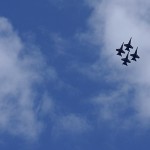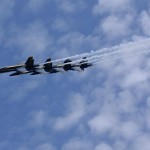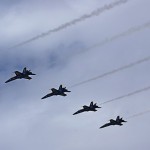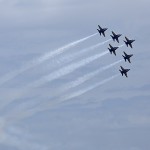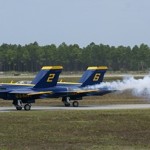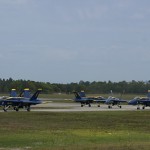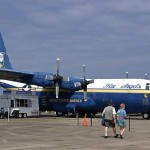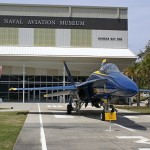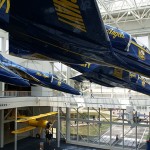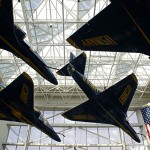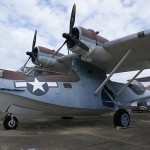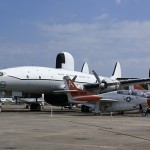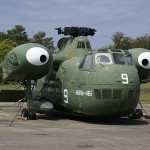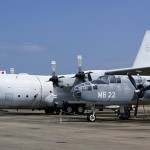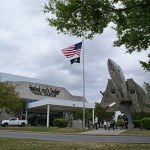Here are some photos from our visit to Naval Air Station Pensacola where we saw the Blue Angels practice and then toured the Naval Aviation Museum. Click on a thumbnail to see a larger version of the image in a separate tab. Maximum size is typically 600 pixels.
- The Blue Angels in tight diamond formation. The wingtips are about 24″ from the adjacent cockpits traveling 350 MPH.
- The Blue Angels FA-18’s in formation.
- Inline formation of four fo the six Blue Angels FA-18’s.
- The Blue Angels in an open diamond formation.
- Straight out of “Top Gun” this is a very difficult maneuver. They are low. slow, and “dirty” (note that the landing gear are extended).
- Multiple jets, but they fly as one.
- The FA-18 is a remarkably agile plane.
- Most of the “show” takes place around 350 MPH but they did make high speed passes at 700 MPH and slow speed maneuvers under 200 MPH.
- The FA-18 engine thrust exceeds the weight of the plane. They can take off and then climb straight up.
- A final show of smoke as the Blue Angels taxi back to their hangars.
- The Blue Angels taxi past the audience after the show.
- This C-130 nicknamed “Fat Albert” was used to transport the Blue Angels support personnel and supplies.
- An FA-18 “Hornet” in the courtyard between the two buildings of the Naval Aviation Museum.
- The Blue Angels atrium in the Naval Aviation Museum.
- A previous generation of Blue Angels fighter aircraft hang from the ceiling in the Naval Aviation Museum.
- The U. S. Navy once used only flying boats, but now they do not use any. This was always one of my favorites.
- The civilian version of this weather reconnaissance plane was the epitome of air travel just before the era of jet airliners.
- Who says the military doesn’t have a sense of humor?
- A B-25 “Mitchell” bomber in front of a C-130.
- An FA-14 “Tomcat” in front of the main entrance to the Naval Aviation Museum.
